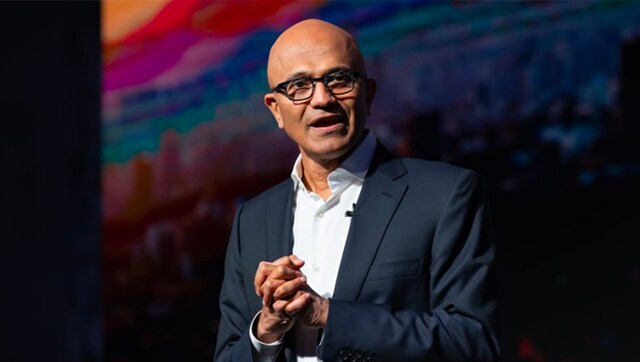Thirsty AI: Microsoft majorly disrupted US city’s water supply to develop ChatGPT, Bard, causing a crisis

Generative AI like ChatGPT, Bard consumes a lot of water, so much so that Microsoft and OpenAI nearly caused a potable water crisis in the US state of Iowa. ChatGPT, for example, uses about half a litre of water for every 5 prompts that it gets
In the pursuit of groundbreaking AI innovations like ChatGPT and Bard, the price that humanity and the environment pay can sometimes be shockingly massive.
It is a well-established fact that AI costs a lot of water and electricity. What is even more shocking, however, is just how much water developing AI tools takes.
A new report has surfaced which states that OpenAI and Microsoft, sought and consumed vast amounts of water from Iowa’s Raccoon and Des Moines river watersheds to cool their supercomputer, which was essential for training their GPT AI models.
Related Articles

Professional AI: OpenAI launches ChatGPT Enterprise, a special chatbot for businesses

OpenAI to generate over $1 bn in revenue this year, dispels fear of going bankrupt
Leading tech giants including Microsoft, OpenAI, and Google are racing to tap into the generative AI frenzy. Yet, they are often tight-lipped about the precise environmental toll of their AI endeavours, which encompass everything from expensive semiconductors to a substantial uptick in water and electricity usage.
Iowa’s Des Moines and Raccoon squeezed dry
Very few people know that central Iowa played a pivotal role in the creation of OpenAI’s most advanced large language model, GPT-4, until a high-ranking Microsoft executive revealed it was “literally made next to cornfields west of Des Moines.”
Creating a large language model involves intensive computing which consumes copious units of electricity and generates considerable heat. To maintain optimal operating temperatures, data centres frequently rely on water, often funnelled to external cooling towers near their warehouse-sized facilities.
According to Microsoft’s latest environmental report, the company’s global water consumption surged by 34 per cent from 2021 to 2022, reaching nearly 1.7 billion gallons, equivalent to more than 2,500 Olympic-sized swimming pools.
This spike is largely attributed to the company’s AI research, particularly its significant investment in generative AI and collaboration with OpenAI.
In a forthcoming paper, researchers at the University of California, Riverside estimate that ChatGPT consumes approximately 500 millilitres of water, every time a user engages it with a series of 5 to 50 prompts.
“Most people are not aware of the resource usage underlying ChatGPT,” notes Shaolei Ren, a researcher involved in calculating the environmental impact of generative AI products.
Google, too, reported a 20 per cent increase in water consumption during the same period, primarily because of its AI ventures. This surge in water use was unevenly distributed, with noticeable spikes in Oregon, Las Vegas, and Iowa, where Google drew more potable water for its Council Bluffs data centres than anywhere else.
Efficiency, not more computing power
In response to queries from The Associated Press, Microsoft stated that it is investing in research to quantify AI’s energy and carbon footprint while working on enhancing the efficiency of large systems in both training and application. The company emphasized its commitment to sustainability, striving to be carbon-negative, water-positive, and zero waste by 2030.
OpenAI echoed these sentiments, asserting its dedication to responsible computing practices and efforts to minimize the environmental impact of large AI models.
Microsoft’s initial $1 billion investment in OpenAI in 2019 laid the foundation for their partnership, supplying the computational muscle necessary to train AI models effectively.
To fulfil this collaboration, the two companies turned to West Des Moines, Iowa, where Microsoft has been establishing data centres for over a decade to support its cloud computing services. The city’s mayor at the time noted that Microsoft was attracted by the municipality’s investment in public infrastructure and significant tax contributions.
West Des Moines presents an efficient environment for AI model training, especially compared to Microsoft’s water-intensive data centres in Arizona. Iowa’s climate allows for the use of outside air for cooling the supercomputer throughout much of the year. Only when the temperature exceeds 29.3 degrees Celsius (approximately 85 degrees Fahrenheit), does the facility resort to water cooling.
Taking a stand against Big Tech
Nonetheless, the quantity of water required, especially during the summer months, remains substantial. In July 2022, just prior to OpenAI’s completion of GPT-4 training, Microsoft pumped approximately 11.5 million gallons of water into its Iowa data centres, constituting about 6 per cent of the district’s total water consumption, which also serves the city’s residents.
A document from the West Des Moines Water Works in 2022 stipulated that future data centre projects from Microsoft would be considered only if they demonstrated that they have the technology to significantly reduce peak water usage.
For all the latest Technology News Click Here
For the latest news and updates, follow us on Google News.

